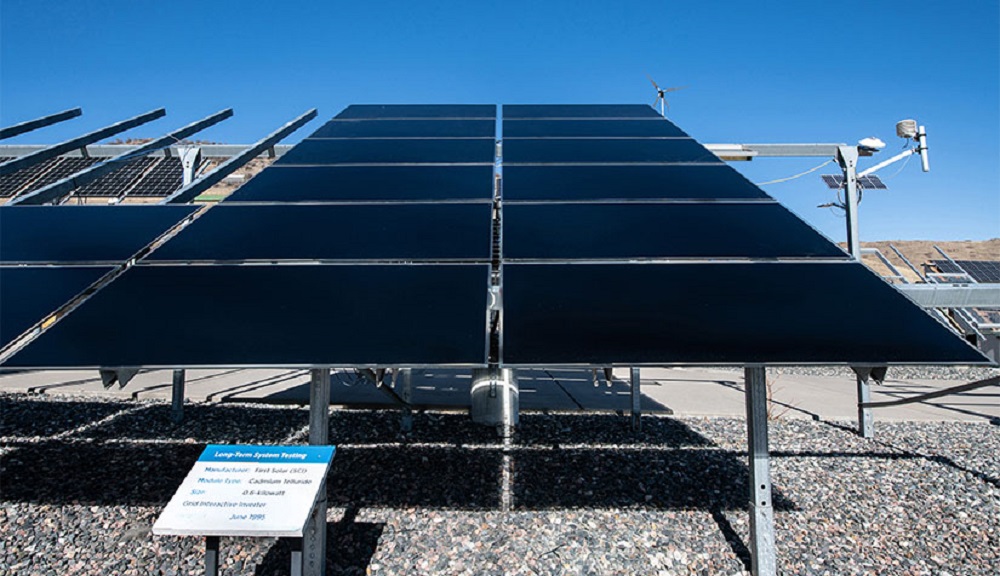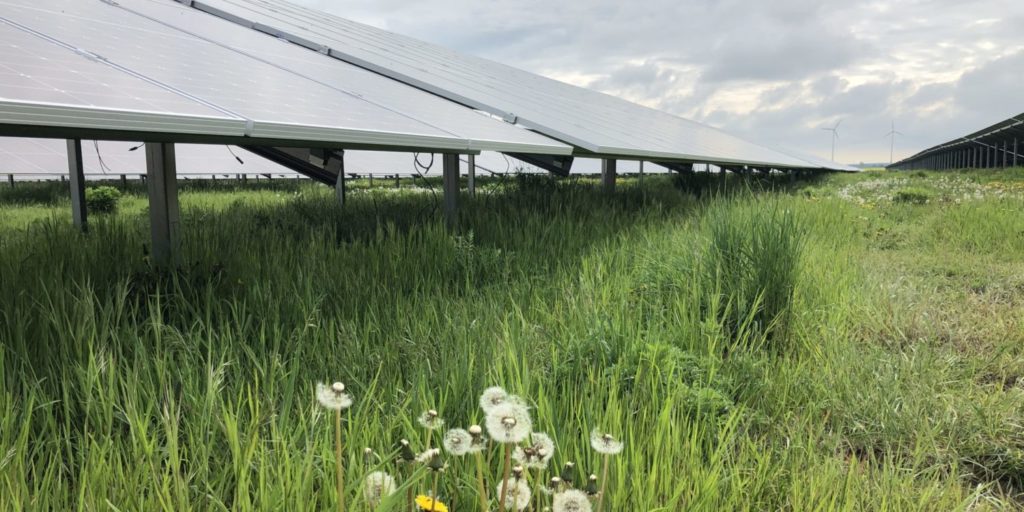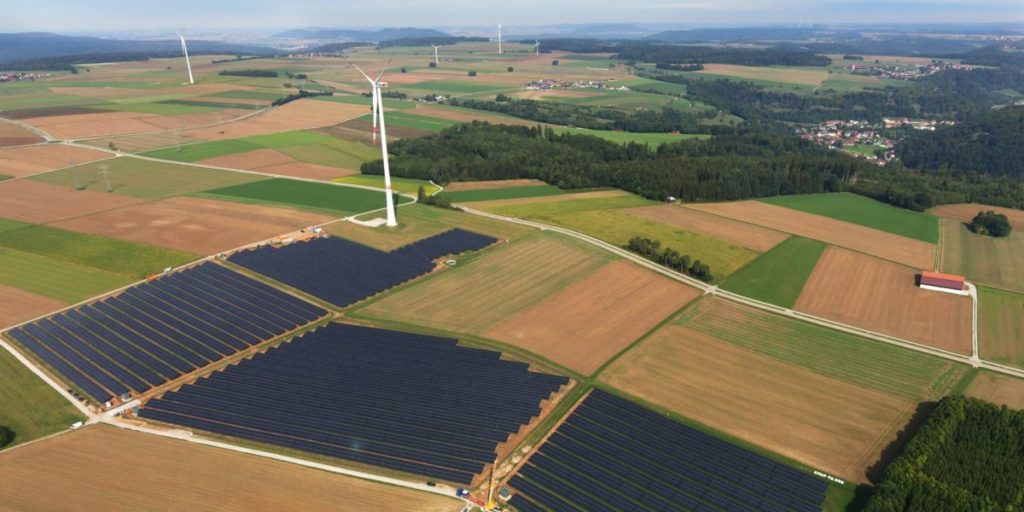https://www.pv-magazine-australia.com/2022/12/09/how-clean-energy-technologies-achieve-commercial-success/

A 0.6KW First Solar Cadmium Telluride PV test array, installed June 1995 at NREL’s Outdoor Test Facility.
Image: Dennis Schroeder, NREL
From pv magazine USA
Research and development is vital in the development of new technologies, yet they have many obstacles to overcome before they can move from the lab to the marketplace. Analysts from the National Renewable Energy Laboratory (NREL), Joint Institute for Strategic Energy Analysis (JISEA), and U.S. Department of Energy (DOE) analysed case studies of the first commercialisation of four clean energy technologies: thin-film photovoltaic (PV) solar panels, wind turbines, dual-stage evaporators for refrigeration, and fuel cells for material handling equipment.
Findings across the case studies—published in a Frontiers in Energy Research article—revealed three components common to successful advancement to commercialisation: (1) a good fit among public-private partnerships, R&D infrastructure, and the technology itself; (2) appropriate alignment of government regulations, R&D priorities, and market forces; and (3) the right timing between technology readiness and market opportunity.
“These findings can help inform clean energy investment decision-making, maximise benefits from R&D, and advance transition to a productive, low-emission future,” said Wyatt Merrill, DOE technology manager and co-author.
The thin-film solar case study focuses on First Solar, a U.S.-based manufacturer that benefited from DOE solar research, and directly received DOE funding in research partnerships from the 1980s to 2000s. The researchers credit First Solar’s early success to the fact that the company addressed regulatory needs within the thin-film PV technology’s first major market and established a proven product at a price and time for a market that was ready for it.
A notable advance in the early stages of thin-film research demonstrated a record (at the time) of 15.8% cell using a cadmium chloride (CdCl2) heat treating process. First Solar co-developed a high-rate vapour transport deposition manufacturing technique to produce CdTe-based modules at a larger scale, which was an alternative to the slower, costlier close space sublimation manufacturing process. With suitable device efficiency and scalable manufacturing procedures in place, the R&D focus shifted to testing and validation of product reliability. First Solar used testing standards, product quality certifications, and outdoor testing facilities funded by DOE and led by Arizona State University and NREL to prove by 2003 that its modules were ready to enter the solar market.
First Solar entered the strong Germany solar market in the 2000s. But first its modules needed to meet energy performance and regulatory requirements, which included electronic waste regulation and restrictions on the use of certain toxic substances like cadmium. A 2004 effort helped resolve concerns about emissions and recyclability of CdTe PV modules with independent, peer-reviewed studies. Later in 2004, First Solar secured its first contract for its compound thin semiconductor modules in the German PV market, which was a commercial turning point for CdTe PV. In 2005, First Solar announced a module takeback and recycling program to respond to evolving EU policy directives, an effort that helped communicate First Solar’s responsiveness to regulatory issues, and they addressed public perception of risk sufficiently to access key markets.
While CdTe modules are less efficient than silicon-based panels, they cost less to manufacture and achieved the lowest price per watt from the mid-2000s until the mid-2010s. At the same time, demand for PV products in Europe outpaced supply, and First Solar was able to capitalise on its technology.
“The thin-film PV case study shows the importance of addressing regulatory needs within the technology’s first major market,” said Marie Mapes, DOE technology manager and co-author. “In addition, establishing a proven product at a price and time when the market was ready for it led to its early success.”
The key findings in the thin-film PV case study identified the successful use of three key commercialisation strategies: development of technology with many commercially relevant inputs through public/private partnerships, alignment of set technology cost goals and product development that achieved them, and timing compatibility of technology readiness and market opportunity. First Solar’s thin-film development benefited from government funding over decades, which enabled foundational materials research and consistent testing standards. What resulted was a prepared company with the right product at the right time. CdTe photovoltaics of proven reliability were a lower-cost replacement in a clean energy market with an open window of opportunity, allowing the early commercialisation success of this solar technology.
The four case studies highlight how a good balance of technology, R&D, and public-private partnership—along with regulatory and market force alignment and the right timing—can lead to successful first commercialisation of clean energy technologies.
This content is protected by copyright and may not be reused. If you want to cooperate with us and would like to reuse some of our content, please contact: editors@pv-magazine.com.
<




